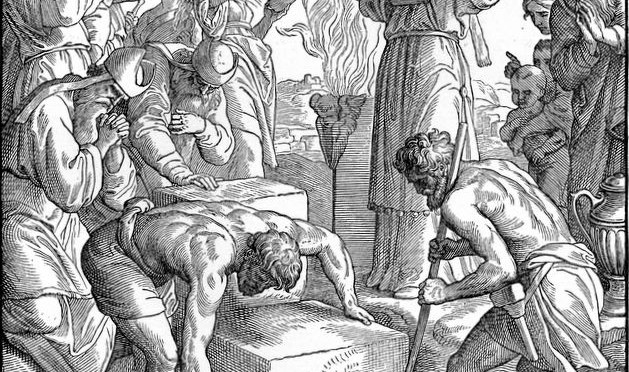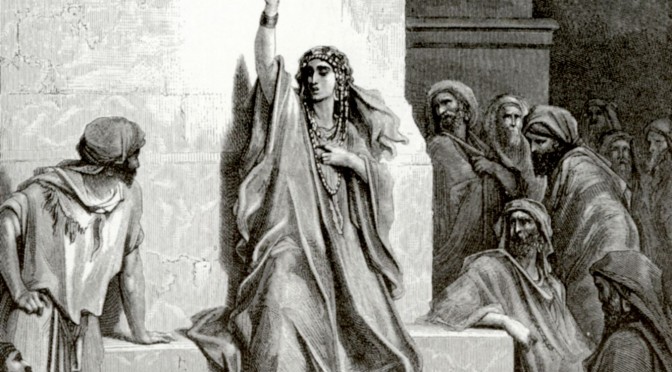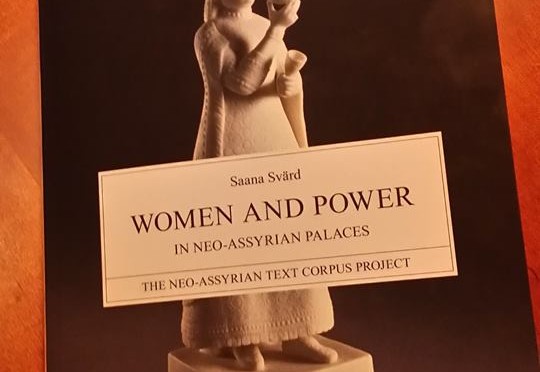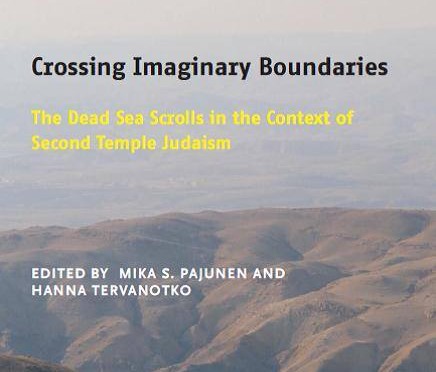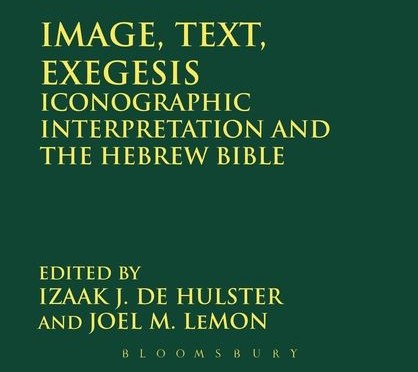Vuonna 1947 muutama paimenpoika Kuolleenmeren luoteiskulmalla Qumranissa heitteli ajankulukseen kiviä läheiseen luolaan. Kuului erikoinen kilahdus – kivi oli osunut saviruukkuun, jonka sisällä oli kirjakääröjä. Löytö oli ainutlaatuinen. Vanhimmat ruukun sisältämät tekstit olivat toiselta vuosisadalta ennen ajanlaskua ja uusimmat Jeesuksen jälkeiseltä ajalta. Continue reading Sollamo & Pajunen (toim.): Kuolleenmeren kadonnut kansa (10/2015)
Category Archives: Publications
Who was Sheshbazzar?
Sheshbazzar has been a bit of a mystery in discussions of Persian Period Yehud (Judah). He is only mentioned four times in the Hebrew Bible, each in Ezra, called variously “Prince of Yehud” and “governor.” Although almost always accepted as historical, the sparse attestation (including lack of patronymic), the apparent disjunction in titles, and an overlap in responsibilities with Zerubbabel have led to numerous scholarly theories on who Sheshbazzar was and what his role was. Continue reading Who was Sheshbazzar?
Mothers as Leaders in Early Jewish Texts
The status of women in early Judaism continues to be debated. Interestingly, Liber Antiquitatum Biblicarum (L.A.B.) employs the term ‘mother’ several times in chapter 33, which outlines Deborah’s farewell speech and her death. This article analyzes the significance of the title ‘mother’. This term has been interpreted in different ways in the past. For instance, several scholars understand the title ‘mother’ as a ‘feminist counterpart’ to the term ‘father’. I think such interpretation is problematic since it retrojects a modern perspective upon the ancient author. Moreover, I claim that most research done on the figure of Deborah in L.A.B. regarding the title ‘mother’ appear to be based on the scholars’ assumptions about women in the ancient world rather than on critical research of the actual text. Continue reading Mothers as Leaders in Early Jewish Texts
Understanding Rhetoric and Hyberbole in the Hebrew Bible
Biblical scholars often treat idealistic expectations – for kings or eras – as “eschatological” or “messianic” expectations. Yet this sort of analysis often elides the rhetorical nature of the source texts. Messianism and eschatology are complex and important ideas, but they need to be carefully understood within the ways in which humans communicate with each other. Only when a broader rhetorical context is understood can particular concepts such as these be analyzed effectively, and thus appreciated on their own terms – why an author or a community found them appealing at a particular moment in time. I analyze the rhetoric of Obama’s first presidential campaign as a recent comparator, using Bormann’s Symbolic Convergence Theory and recent work on hyperbole. The results of this discussion are then applied to four sample passages from the context of Hebrew Bible to argue that idealistic or “utopian” language need not necessarily imply any of the ideas associated with messianism or millenarianism. In the final analysis this will mean that scholars must be more careful in delineating the diachronic development of ideas in ancient texts. Continue reading Understanding Rhetoric and Hyberbole in the Hebrew Bible
New Publication: “Women and Power in Neo-Assyrian Palaces”
Fresh from the printers! A new book written by CSTT-member Saana Svärd has just appeared in the series State Archives of Assyria Studies. Continue reading New Publication: “Women and Power in Neo-Assyrian Palaces”
The Origins of Satan in Judaism
Scholars looking to understand from where the figure of Satan derives have long appealed to Iranian influence, particularly in the form of the Zoroastrian Angra Mainyu (Ahriman). I argue instead that the first appearance of the term as a noun in the Hebrew Bible ought to be understood as an administrative official of the Achaemenid Empire. This continues a working hypothesis of mine that various aspects of the divine realm was envisioned as similar to the Achaemenid Empire by some in Second Temple Judaism. Continue reading The Origins of Satan in Judaism
New publication: “Crossing Imaginary Boundaries: The Dead Sea Scrolls in the Context of Second Temple Judaism”
Fresh from the printers! A new publication by the Finnish Exegetical Society, which is edited by two members of the CSTT, has just been released:
Pajunen, Mika S. & Hanna Tervanotko (eds.) (2015) Crossing Imaginary Boundaries. The Dead Sea Scrolls in the Context of Second Temple Judaism. Publications of the Finnish Exegetical Society 108. Helsinki: Finnish Exegetical Society. Continue reading New publication: “Crossing Imaginary Boundaries: The Dead Sea Scrolls in the Context of Second Temple Judaism”
Recent CSTT publications: ‘Image, Text, Exegesis: Iconographic Interpretation and the Hebrew Bible’
In December, a volume co-edited by Izaak de Hulster, a post-doctoral researcher in CSTT’s team 1, and Joel M. LeMon, Emory University, was published by Bloomsbury T&T Clark. The volume is entitled ‘Image, Text, Exegesis: Iconographic Interpretation and the Hebrew Bible‘ (The Library of Hebrew Bible/Old Testament Studies 588). Continue reading Recent CSTT publications: ‘Image, Text, Exegesis: Iconographic Interpretation and the Hebrew Bible’
Recent CSTT publications: Approaching Religion, Vol. 4/2
In the most recent issue of the open-access journal Approaching Religion, the CSTT is well represented with two articles published by Raz Kletter and Izaak de Hulster (both members of Team 1). Continue reading Recent CSTT publications: Approaching Religion, Vol. 4/2
In the Footsteps of Sherlock Holmes
by Marketta Liljeström
Friday, May 2, was a day of celebration. Over 30 people were gathered in the Faculty Room as Anneli Aejmelaeus’s Festschrift was handed to her by Kristin De Troyer, Michael Law, Marketta Liljeström and the jubilant group of friends and colleagues. Continue reading In the Footsteps of Sherlock Holmes


